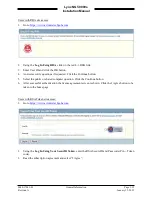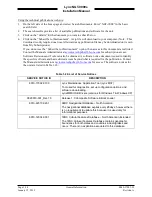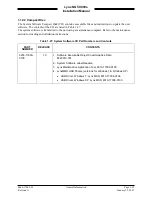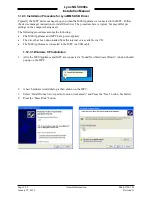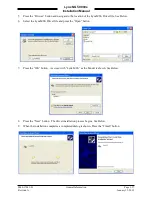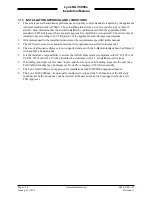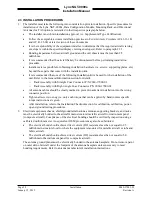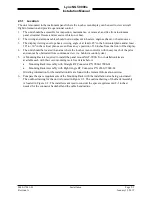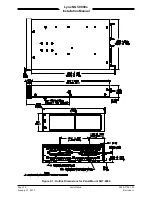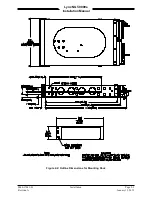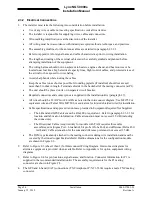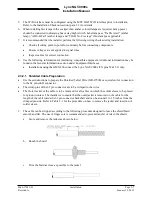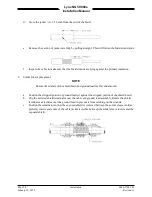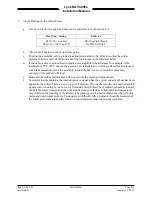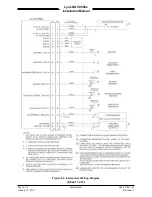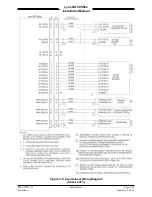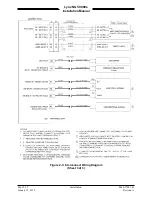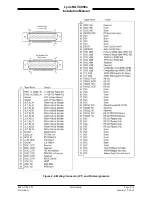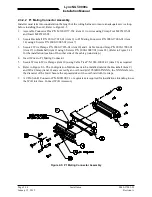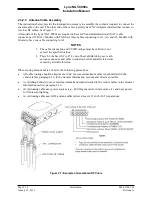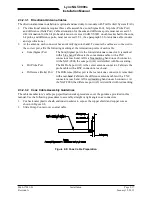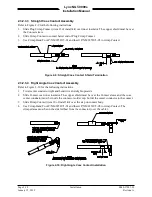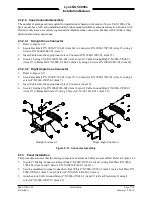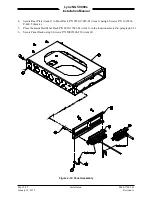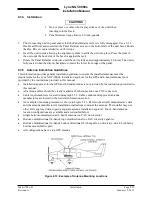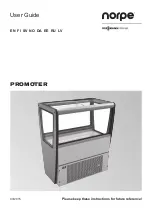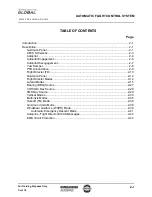
Lynx NGT-9000s
Installation Manual
2.3.2 Electrical Connections
1.
The installer must take the following into consideration before installation.
•
Use of any wire or cable not meeting specification voids all warranties.
•
The installer is responsible for supplying wires, cables and connectors.
•
Wire-marking identification is at the discretion of the installer.
•
All wiring must be in accordance with industry-accepted methods, techniques, and practices.
•
The assembly guidelines for the antenna cables are detailed in paragraph 2.3.2.3.
•
Refer to Appendix A for signal name and cable characteristics prior to wiring installation.
•
The length and routing of the external cables must be carefully studied and planned before
attempting installation of the equipment.
•
The wiring harness should not run adjacent to heaters, engine exhaust, and heat sources or be
located near fuel lines, high electrical capacity lines, flight control cables, and protected areas of
the aircraft or be exposed to wire chafing.
•
Avoid sharp bends while routing the cables.
•
Keep the cables run as short as possible. Grounding pigtails (if installed) should not exceed
more than 3 inches in length. Terminate shields in the backshell of the mating connector (at P1).
•
The unit should be placed on its own separate circuit breaker.
•
Required connectors and contact pins are supplied in the installation kits (paragraph 1.7).
•
All wires should be 22 AWG or 24 AWG as noted in the interconnect diagram. Use M22759 or
equivalent wire and Tefzel Wire M27500 or equivalent for twisted shielded wired for installation.
•
Cable specifications and approved vendors are provided in Equipment Required Not Supplied.
o
The L-Band and GPS Cables must be RG-400 or equivalent. Refer to paragraph 2.3.2.3 for
location and fabrication information. Cable attenuation must not exceed 1.5 dB (including
the connectors).
o
The Directional Cables (required only for models with TAS) requires three cable
assemblies; sum (Sigma Port – blue band), bit probe (Probe Port) and difference (Delta Port
– red band). Cable attenuation for the sum and difference ports must not exceed 1.5 dB.
•
The DCM is permanently attached to the mating connector during wire installation and must be
covered by the tinned copper braided shield. Outline dimensions for the configuration module
are shown in Figure 2-6.
2.
Refer to Figure 2-3 (sheet 1 thru 3) for Interconnect Wiring Diagram. Interconnect diagrams for
alternate equipment is provided when available. Refer to Appendix A for option equipment wiring
diagrams.
3.
Refer to Figure 2-4 for pin locations, signal names, and function. Connector information for P1 is
supplied in the recommended installation kit. The assembly requirements for the P1 mating
connector are shown in Figure 2-5.
4.
The GPS and L-band (UAT) connections (TNC Amphenol P/N 31-5660) require a male TNC mating
connector.
Page 2-6
Installation
0040-17001-01
January 15, 2015
Revision A


